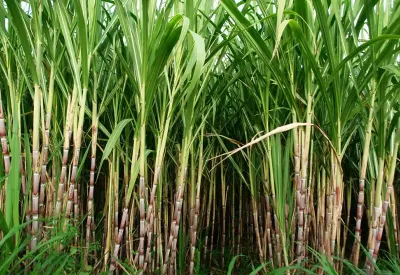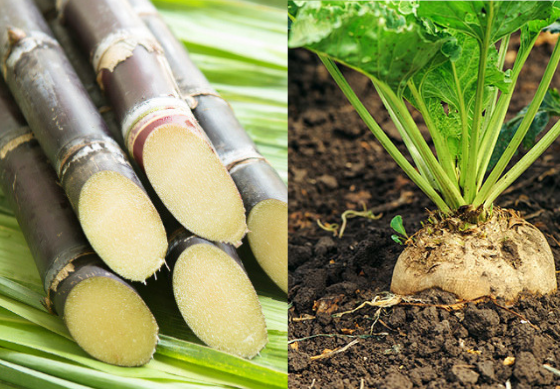Understanding Sugar Beet Vs Sugar Cane: Key Distinctions and Their Importance in the Worldwide Sugar Market
The differences in between sugar beet and sugar cane are considerable in the context of the worldwide sugar sector. Their differing climatic demands affect where they can be grown, while their unique dietary accounts affect customer choices. Additionally, the financial implications of each plant form market characteristics. Understanding these differences is important for realizing the more comprehensive effect on production and supply chains. What more complexities develop when considering their roles in the industry?
Climate and Geographic Versatility
Sugar beet and sugar cane exhibit unique climate and geographic flexibility that affects their farming. Sugar beet grows in temperate environments, needing amazing climate for ideal development. It is mostly expanded in regions such as Europe and The United States And Canada, where conditions favor its growth during springtime and loss. On the other hand, sugar cane embellishments in exotic and subtropical environments, requiring cozy temperatures and abundant rains. This plant is mainly grown in countries like Brazil, India, and Australia, where the setting supports its long development cycle.The differing adaptability of these crops impacts not just their geographical circulation but also the farming techniques employed by farmers. Sugar beet's resilience to cooler temperature levels enables for earlier growing, while sugar cane depends on a longer expanding season to attain maximum yield. Recognizing these weather choices is vital for boosting production and ensuring food security in areas depending on these vital sugar resources.
Growing and Collecting Techniques

Growing sugar beet and sugar cane involves distinct techniques customized to every plant's certain growth requirements. Sugar beet is commonly sown in awesome, warm climates, requiring well-drained dirt and accurate spacing to permit ideal root advancement. Sugar beet vs sugar cane. Farmers commonly employ mechanical planters to assure uniform seed positioning, adhered to by normal watering and weed management methods to sustain growth.In contrast, sugar cane thrives in warmer climates and is typically propagated via stem cuttings as opposed to seeds. Growing occurs in rows, enabling appropriate sunlight and airflow. Collecting sugar cane is labor-intensive, commonly entailing hands-on cutting or making use of specialized machinery, relying on the scale of manufacturing. Alternatively, sugar beet harvesting uses mechanical harvesters that extract the origins from the dirt, minimizing damages and assuring a cleaner product. Both plants require mindful management to take full advantage of yield and high quality, mirroring their value in the worldwide sugar market
Handling Approaches and Performance
Processing methods for sugar beet and sugar cane expose vital differences that impact effectiveness and return. Sugar beetroots undertake a collection of actions, starting with slicing the root into thin cossettes, adhered to by removal of juice through diffusion or pressing. This juice is then cleansed, focused, and crystallized, causing granulated sugar. The procedure usually takes concerning 5-10 hours from collecting to crystallization.In comparison, sugar cane handling entails squashing the stalks to draw out juice, which is after that warmed and made clear. The juice undergoes evaporation and condensation, typically taking much longer than beet handling because of the fibrous nature of the cane. In addition, sugar cane can be processed constantly, improving effectiveness.
Financial Effect and Worldwide Production Patterns
The distinctions in handling methods in between sugar beet and sugar cane not just affect efficiency however also have substantial financial implications. Sugar cane dominates in tropical regions, offering reduced manufacturing prices as a result of desirable climatic problems Look At This and reduced energy needs. On the other hand, sugar beet is mostly grown in warm areas, where higher manufacturing expenses are usually incurred. This geographical disparity influences global supply chains, affecting prices frameworks and availability.Recent fads indicate a varying global need for sugar, with both crops experiencing rate volatility. As countries go for self-sufficiency, financial investments in local sugar beet production have actually boosted, especially in Europe and The United States And Canada. Developing countries proceed to count heavily on sugar cane, driven by export capacity. Overall, the economic influence of these crops is extensive, shaping farming plans, profession arrangements, and the sustainability of the international sugar industry.
Nutritional Profiles and Health And Wellness Considerations
While both sugar beet and sugar cane function as key resources of sucrose, their dietary profiles and health and wellness factors to consider vary considerably. Sugar cane, usually regarded as a much more all-natural sweetener, consists of trace amounts of vitamins and minerals, consisting of calcium and potassium, along with anti-oxidants. On the other hand, sugar beet is mostly composed of sucrose with minimal dietary value, yet it is rich in fiber and particular phytonutrients, which may this contact form provide digestive benefits.Health considerations bordering both sources concentrate on their high glycemic index and possible effects for excessive weight and diabetic issues. While both sorts of sugar add to calorie intake, the processing methods can impact their health effect. Sugar beet usually goes through extensive refining, while sugar cane may keep more of its all-natural substances in less processed types, such as raw cane sugar. Inevitably, small amounts is key when incorporating either right into a well balanced diet plan.
Often Asked Concerns

Which Regions Mostly Expand Sugar Beet Versus Sugar Cane?
Regions mainly growing sugar beet consist of Europe and North America, while sugar cane thrives in tropical and subtropical areas such as Brazil, India, and Southeast Asia. Climate and soil conditions greatly affect these agricultural patterns.
How Do Sugar Beet and Sugar Cane Differ in Taste?
What Prevail Spin-offs of Sugar Beet and Sugar Cane?
Usual by-products of sugar beet include molasses and pet feed, while sugar cane returns bagasse, molasses, and ethanol. Both crops contribute significantly to numerous industries, boosting sustainability and financial value past their primary sugar manufacturing.
How Do Environmental Factors Affect Sugar Beet and Sugar Cane Yields?

What Is the Historic Value of Sugar Beet and Sugar Cane Growing?
The historic significance of sugar beet and sugar cane cultivation depends on their roles in international economic climates, farming techniques, and trade. Both crops shaped social structures, influenced early american plans, and added to the development of modern markets.
Comments on “Understanding the key distinctions in climate needs of sugar beet vs sugar cane”